Posted by Josh Elijah on 8th Feb 2025
BotBlox releases Compact Pressure Tolerant Ethernet Infrastructure
At BotBlox, our focus is on building outrageously small and rugged ethernet infrastructure. Engineers use our hardware in a huge variety of applications, ranging from high altitude imaging drones to pipe inspecting robots.

Inside a pipe inspecting robot, see if you can spot our hardware.
We wanted to make our products the best on the market for ruggedness in small spaces, and to ensure they can be used in very deep sea applications. To solve this, we partnered with the Global Foundation for Ocean Exploration.
What is pressure tolerance and why is it important?
Working underwater can be challenging. As you go deeper, the pressure underwater builds to a point that easily crushes anything. This is bad news for underwater robots, and means they need to be built specifically to achieve pressure tolerance. At the bottom of the Challenger Deep, the pressure is 110,000 kPA (16,000 PSI, 1100 Bar). That’s about equivalent to the pressure of 100 adult elephants standing on your head.
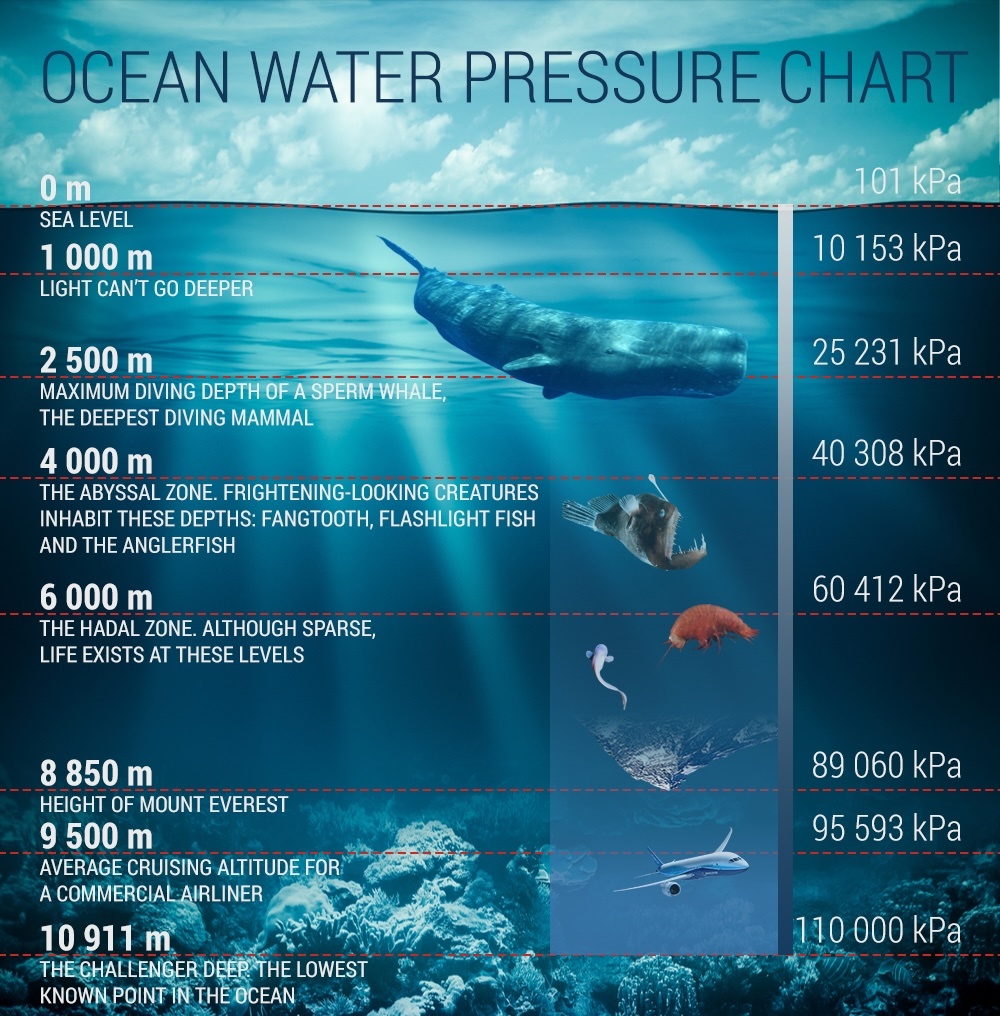
High pressure crushes anything that is sealed and hollow; essentially anything that has internal voids. This can be challenging for electronic components. Pressure can also affect the performance of electronic components, specifically components that have a piezo-electric effect. It’s safe to assume that the vast majority of COTS (commercial off the shelf) ethernet hardware is not going to be pressure tolerant.
This means achieving ethernet connectivity for deep sea applications is difficult. The options for COTS hardware are limited to bulky, expensive solutions. We applied specific design techniques to achieve this make our hardware pressure tolerant.
What tests did we run?
Deep sea devices are most usually sealed and filled with a mineral oil that permeates the entire internal assembly. This means all the electronics are submerged in oil. Testing this requires a pressure chamber that is able to achieve up to 10,000 PSI (69,000 KPa) around 7000 meters depth.
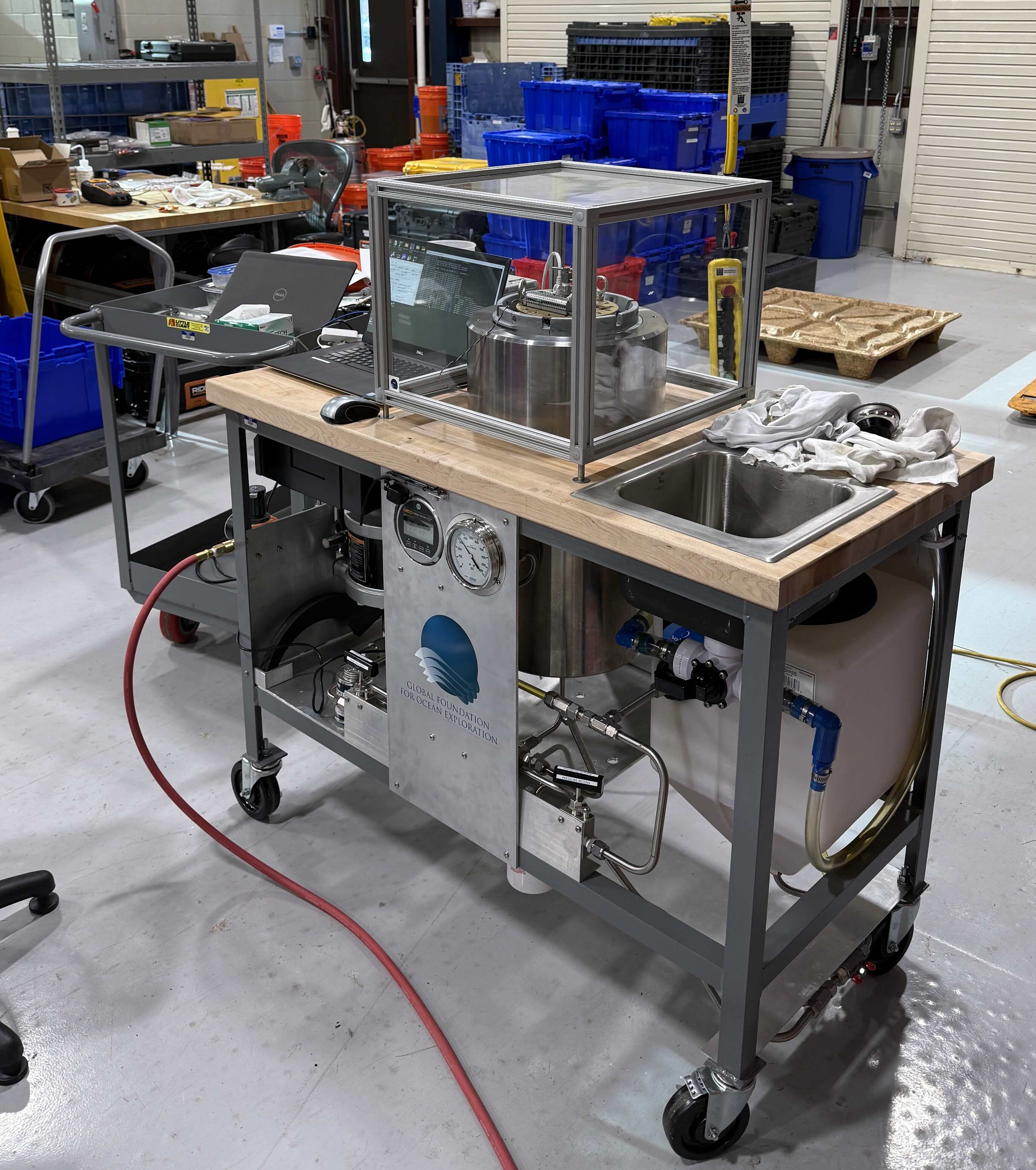
A schematic of the test setup is shown below.
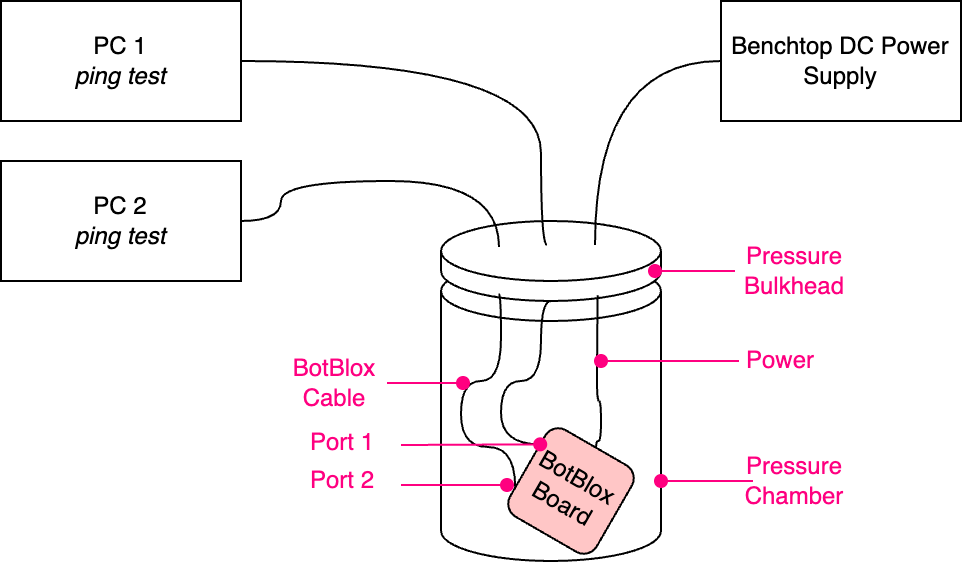
The BotBlox board was placed in the pressure chamber, submerged in oil, with ethernet ports and power being routed out through a pressure bulkhead. A 12 DC voltage was applied and two PCs were connected to the ethernet ports, running initially a Ping test and then an IPerf test.
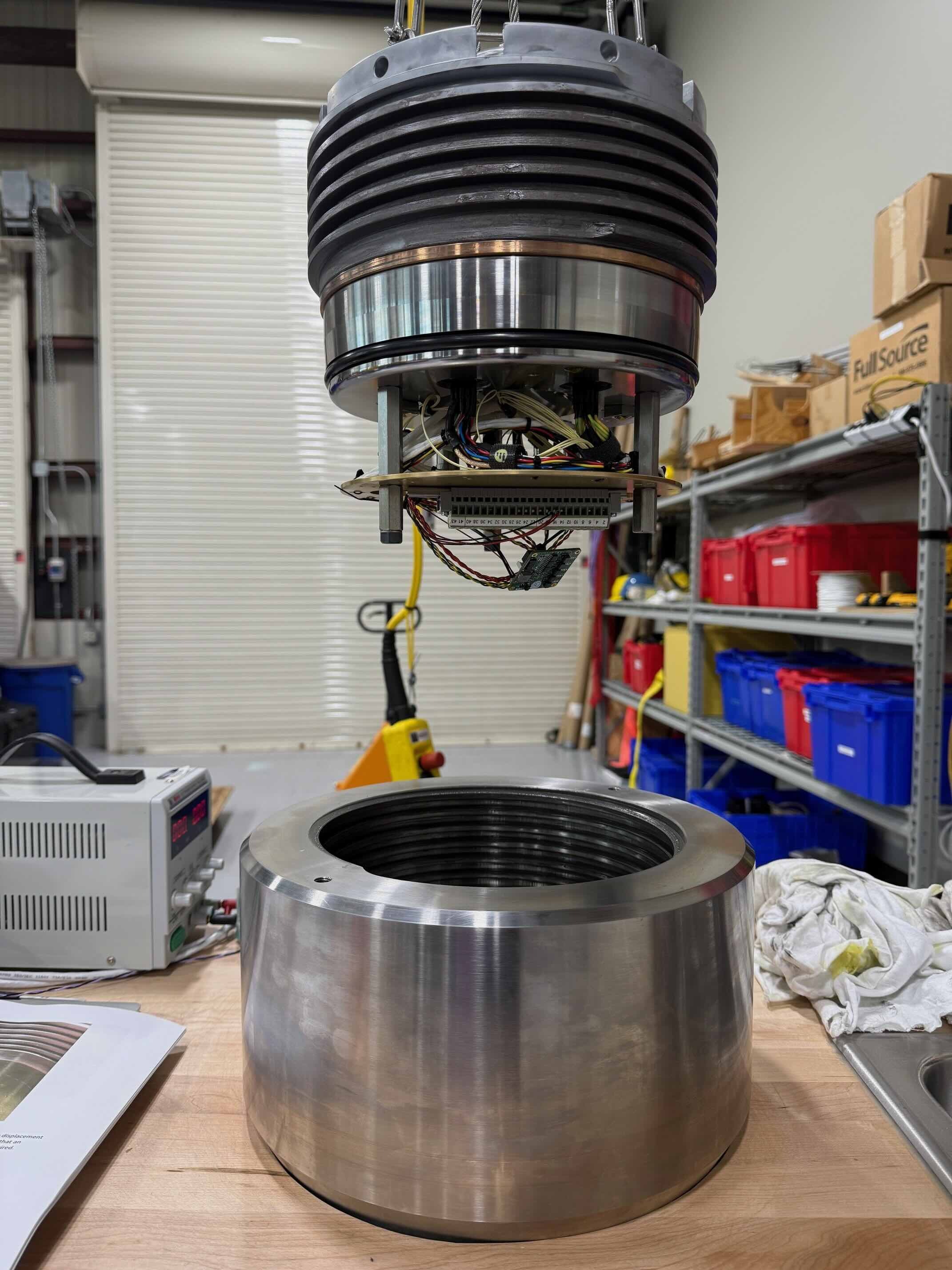
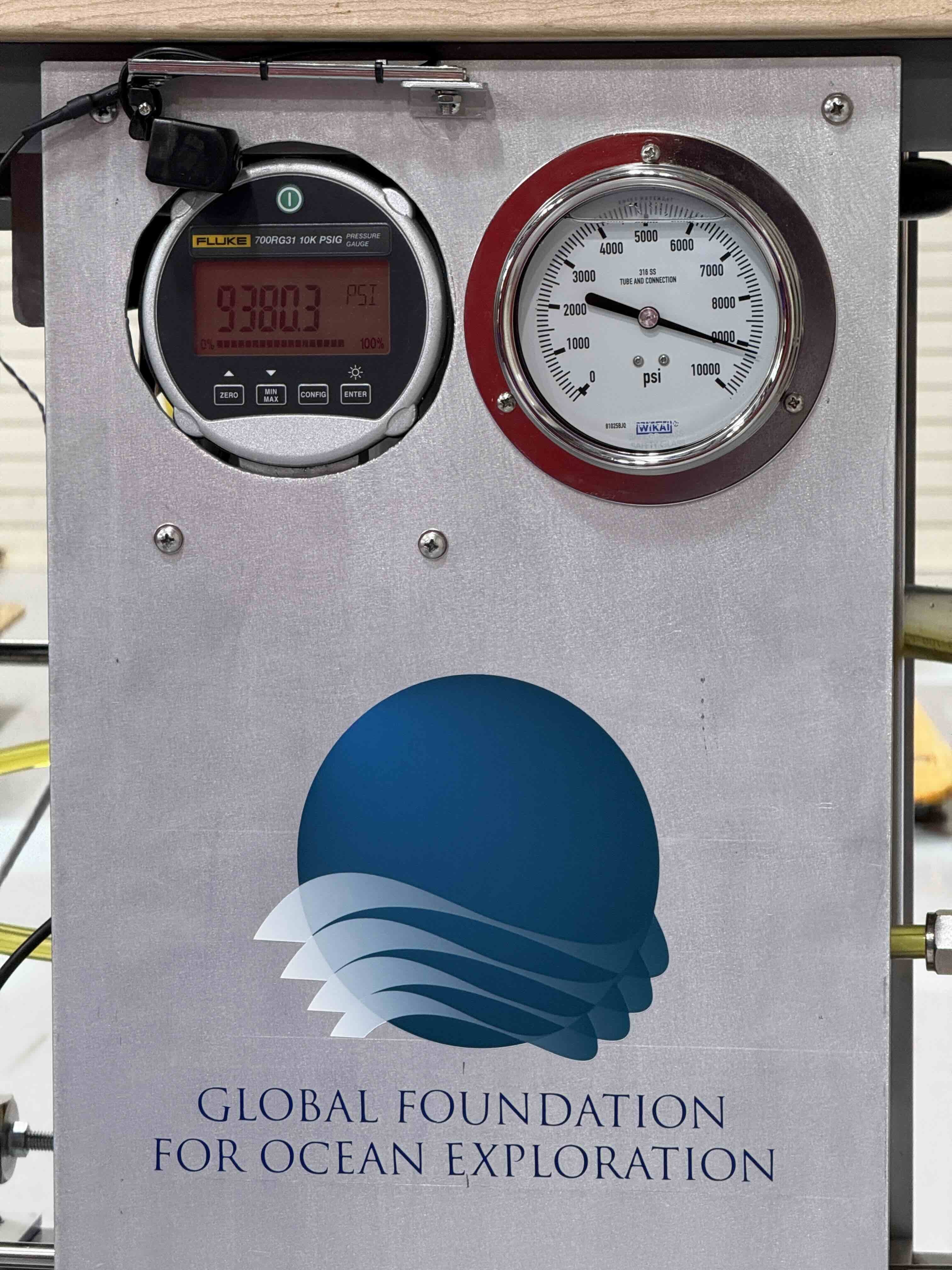
More test information is in the table below.
|
Pressure gauge |
FLUKE, 700R, 5499201, 4.04 |
|
Voltage Input |
12V |
|
Test Temperature |
Ambient |
|
Oil |
Shell Diala transformer oil |
|
Maximum pressure |
9380 PSI (105% of 6000 meters) |
The Results
The graph below shows the results on BB-SWI-D-1. The test was run for approximately 25 minutes, with pressure ramping up from 0 PSI to a peak of 9386PSI. The ping test was run continuously, with missed ping packets being logged. The results showed the pressure had no effect on functionality. The missing ping tests are expected and occur at ambient conditions (unrelated to test setup).
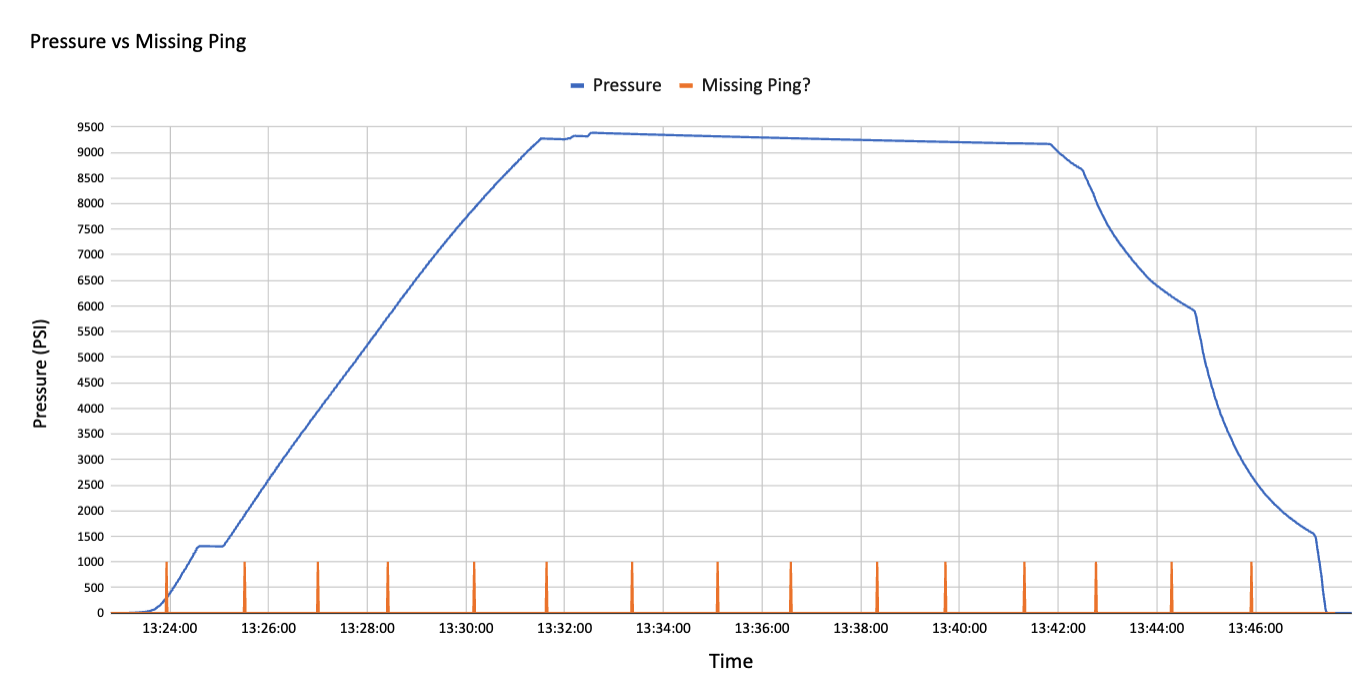
The same test was then run, this time with an iperf test to detect if pressure had any effect on datarate.
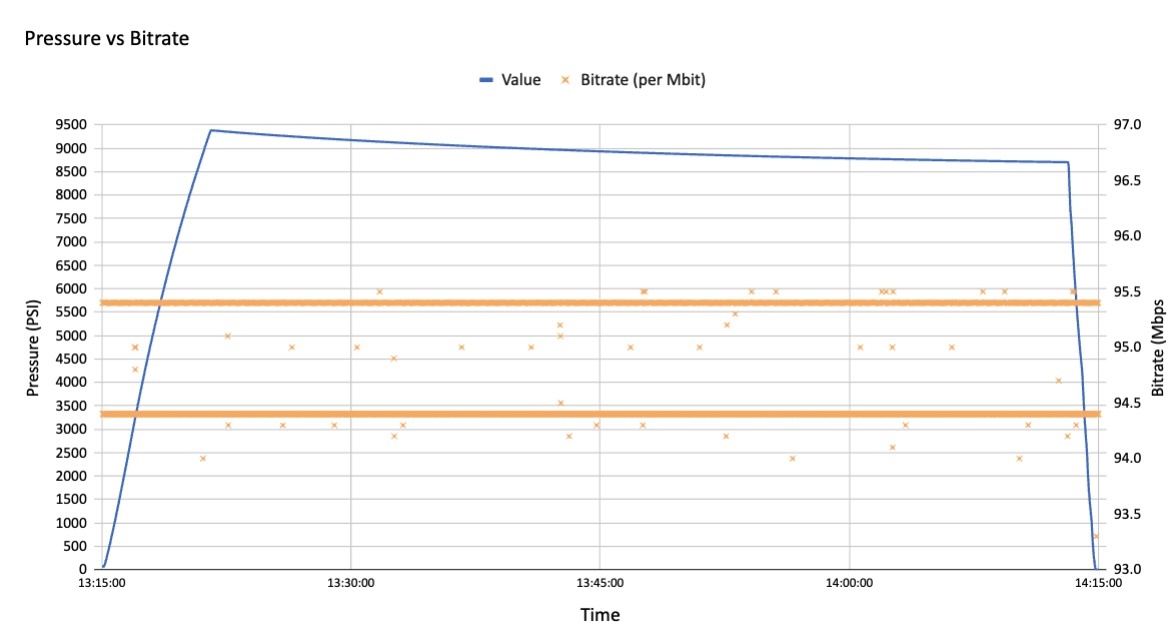
This test followed the same pressure levels as the ping test, but for around 60 minutes instead. The results showed a bit rate between 94Mbps and 95.5Mbps for a 100BASE-T (100Mbps) connection. This is exactly the same expected rate that would be found under ambient conditions, and no noticeable difference in performance was observed between peak pressure and ambient.
What does this mean?
This means that two of our boards are now fully qualified for use in high pressure applications, up to 9380PSI!
The following boards have been tested under this method above:
- SwitchBlox Industrial (revision D and later)
- UbiSwitch (revision A and later)
- Ubiswitch Baseboard, gigabit ports only, SFP ports not yet tested (revision A and later)
As of February 2025
